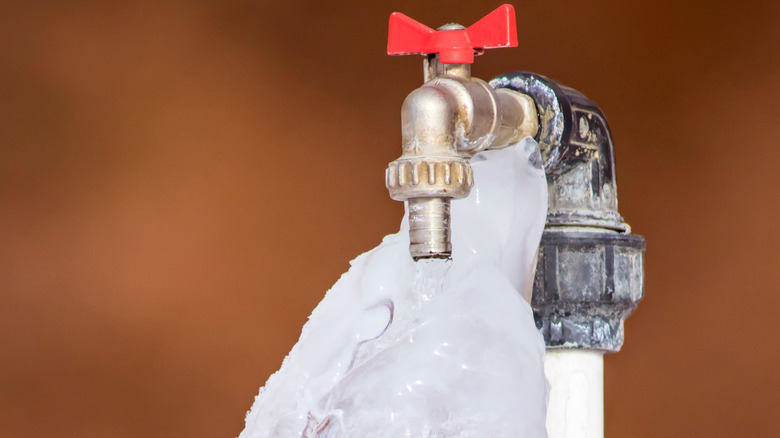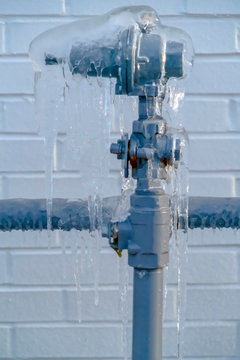Key Methods for Avoiding Frozen Pipes in Winter
Try HereHere down the page you can find a lot of outstanding insights in relation to Preventing and dealing with frozen pipes.

Winter can damage your pipes, specifically by freezing pipes. Right here's exactly how to avoid it from happening and what to do if it does.
Intro
As temperature levels drop, the threat of frozen pipes boosts, possibly causing expensive repairs and water damage. Comprehending exactly how to stop icy pipelines is important for house owners in cool environments.
Understanding Icy Pipes
What triggers pipes to ice up?
Pipelines freeze when exposed to temperatures listed below 32 ° F (0 ° C) for prolonged periods. As water inside the pipelines freezes, it increases, putting pressure on the pipeline walls and potentially creating them to break.
Threats and problems
Icy pipes can bring about water supply interruptions, building damages, and costly repair services. Ruptured pipes can flooding homes and create considerable architectural damage.
Indicators of Frozen Piping
Determining icy pipes early can stop them from breaking.
Just how to recognize icy pipelines
Search for reduced water circulation from taps, uncommon odors or noises from pipelines, and visible frost on revealed pipes.
Prevention Tips
Shielding at risk pipes
Cover pipelines in insulation sleeves or use warmth tape to safeguard them from freezing temperatures. Concentrate on pipes in unheated or outside areas of the home.
Heating techniques
Maintain indoor spaces properly heated, specifically locations with plumbing. Open cabinet doors to enable warm air to distribute around pipelines under sinks.
Shielding Exterior Plumbing
Yard hoses and outside faucets
Detach and drain pipes garden pipes prior to winter months. Set up frost-proof faucets or cover exterior taps with shielded caps.
What to Do If Your Pipelines Freeze
Immediate activities to take
If you believe frozen pipes, maintain faucets open to alleviate pressure as the ice melts. Use a hairdryer or towels soaked in hot water to thaw pipes slowly.
Long-Term Solutions
Structural modifications
Consider rerouting pipes away from outside wall surfaces or unheated areas. Add added insulation to attic rooms, cellars, and crawl spaces.
Updating insulation
Purchase premium insulation for pipelines, attic rooms, and wall surfaces. Appropriate insulation assists preserve consistent temperatures and reduces the risk of icy pipes.
Conclusion
Avoiding frozen pipelines needs proactive steps and fast actions. By recognizing the causes, indicators, and preventive measures, home owners can secure their pipes during winter.
5 Ways to Prevent Frozen Pipes
Drain Outdoor Faucets and Disconnect Hoses
First, close the shut-off valve that controls the flow of water in the pipe to your outdoor faucet. Then, head outside to disconnect and drain your hose and open the outdoor faucet to allow the water to completely drain out of the line. Turn off the faucet when done. Finally, head back to the shut-off valve and drain the remaining water inside the pipe into a bucket or container. Additionally, if you have a home irrigation system, you should consider hiring an expert to clear the system of water each year.
Insulate Pipes
One of the best and most cost-effective methods for preventing frozen water pipes is to wrap your pipes with insulation. This is especially important for areas in your home that aren’t exposed to heat, such as an attic. We suggest using foam sleeves, which can typically be found at your local hardware store.
Keep Heat Running at 65
Your pipes are located inside your walls, and the temperature there is much colder than the rest of the house. To prevent your pipes from freezing, The Insurance Information Institute suggests that you keep your home heated to at least 65 degrees, even when traveling. You may want to invest in smart devices that can keep an eye on the temperature in your home while you’re away.
Leave Water Dripping
Moving water — even a small trickle — can prevent ice from forming inside your pipes. When freezing temps are imminent, start a drip of water from all faucets that serve exposed pipes. Leaving a few faucets running will also help relieve pressure inside the pipes and help prevent a rupture if the water inside freezes.
Open Cupboard Doors
Warm your kitchen and bathroom pipes by opening cupboards and vanities. You should also leave your interior doors ajar to help warm air circulate evenly throughout your home.

As a passionate reader on Prevent Frozen Pipes , I figured sharing that topic was really useful. So long as you liked our blog posting if you please make sure you remember to pass it around. Thanks a lot for your time. Don't forget to visit our site back soon.
Get Quote Now